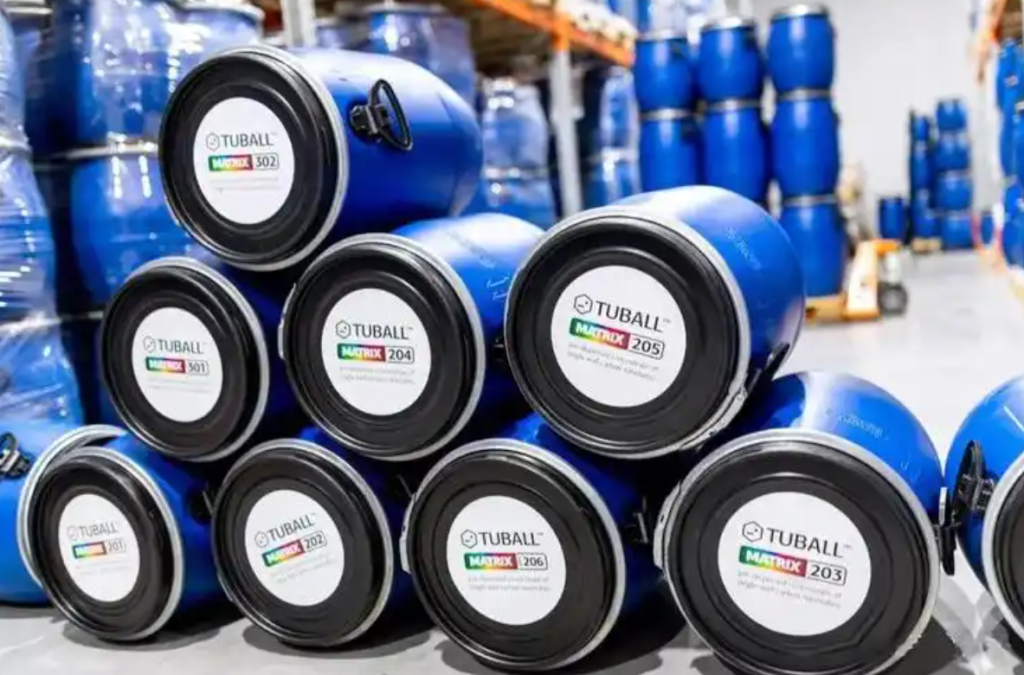Carbon Nanotubes in Supercapacitors: Pioneering Fast-Charging Energy Storage

🔋 Introduction: The Fast-Charging Energy Dilemma
In a world driven by electrification—EVs, portable electronics, smart grids—fast-charging and high-power energy storage is a rising priority. While lithium-ion batteries provide high energy density, they lag in charge rate and cycle life.
Enter supercapacitors—electrochemical devices that charge in seconds, last millions of cycles, and offer high power delivery. But traditional supercapacitors are limited by low energy density.
Carbon nanotubes (CNTs) are now at the forefront of solving this challenge, enhancing the performance, conductivity, and surface architecture of next-generation supercapacitors.
🧪 Part 1: What Makes CNTs Ideal for Supercapacitors?
1.1 Intrinsic Properties
-
High electrical conductivity (~10⁶ S/m)
-
Large surface area (>1000 m²/g for MWCNTs)
-
High aspect ratio → better electron transport
-
Chemical stability in acidic and alkaline electrolytes
1.2 Morphological Advantage
-
Porous 3D networks for rapid ion diffusion
-
Flexible and lightweight
-
Intertwined structures can serve as:
-
Electrodes
-
Current collectors
-
Substrates for hybrid materials
-
⚡ Part 2: Types of CNT-Based Supercapacitors
2.1 Electric Double-Layer Capacitors (EDLCs)
-
Purely physical charge separation mechanism
-
CNTs serve as:
-
Active electrode material
-
Conductive scaffolds
-
-
Energy density: 5–10 Wh/kg
-
Power density: up to 10 kW/kg
-
Typical use: quick-burst energy applications (regenerative braking, UAVs)
2.2 Pseudocapacitors with CNT Hybrids
-
Combine CNTs with transition metal oxides (MnO₂, RuO₂) or conducting polymers (PANI, PEDOT)
-
Offer far higher capacitance (up to 1000 F/g)
-
Energy density: up to 30–50 Wh/kg
-
Power density: 1–5 kW/kg
-
Best for applications needing both high energy and fast delivery
🔍 Part 3: Fabrication Techniques for CNT Electrodes
3.1 Spray Coating & Inkjet Printing
-
Water-based CNT inks for flexible supercapacitors
-
Used in wearable electronics and thin-film devices
3.2 Chemical Vapor Deposition (CVD)
-
Directly grows CNT forests on metal substrates
-
Enables binder-free, highly conductive electrodes
3.3 Electrophoretic Deposition (EPD)
-
Forms uniform CNT layers on complex 3D shapes
-
Scalable for industrial roll-to-roll production
📊 Part 4: Performance Metrics Compared
| Parameter | CNT EDLC | CNT + MnO₂ | Li-ion Battery |
|---|---|---|---|
| Energy Density | 8 Wh/kg | 35 Wh/kg | 150–250 Wh/kg |
| Power Density | 10,000 W/kg | 3000 W/kg | 200–300 W/kg |
| Cycle Life | >100,000 | >20,000 | 1000–3000 |
| Charge Time | Seconds | Seconds–Minutes | 30–120 min |
⚙️ CNT-based supercapacitors excel in power delivery and longevity, making them perfect for applications requiring rapid cycling.
🚗 Part 5: Applications of CNT Supercapacitors
5.1 Electric Vehicles (EVs)
-
Hybrid energy storage: batteries + CNT supercapacitors
-
Power regenerative braking, torque bursts
-
Reduce strain on lithium battery packs
5.2 Renewable Energy Grid
-
Buffering intermittent loads from solar and wind
-
Store and release power within milliseconds
-
Increase grid stability and power quality
5.3 Consumer Electronics
-
Wearables, e-textiles, smartwatches
-
CNT paper supercaps in ultra-thin and flexible forms
-
Charge in under 30 seconds for short power delivery
5.4 Aerospace & Drones
-
Require ultra-light, high-power components
-
CNT fiber capacitors can be integrated into structure (wings, fuselage)
-
Enhance payload-to-power ratios
🧠 Part 6: CNTs in Flexible and Structural Supercapacitors
6.1 CNT Yarns and Fabrics
-
Twisted CNT fibers can be woven into clothes
-
Used in textile energy storage
6.2 Structural Energy Storage
-
CNT/polymer composites embedded in carbon fiber panels
-
Save space + weight in aerospace or e-mobility
-
Example: Airbus prototype wing with embedded CNT supercaps
🧼 Part 7: Purification & Functionalization of CNTs
-
CNTs must be purified to remove residual catalysts (Fe, Ni)
-
Functionalization improves:
-
Wettability
-
Ionic access
-
Compatibility with oxides/polymers
-
Methods:
-
Acid treatment
-
Plasma activation
-
Dopant addition (N, B) to improve conductivity
🏭 Part 8: Commercial Developments
| Company | Application | CNT Integration |
|---|---|---|
| Skeleton Technologies | Automotive ultracaps | CNT-enhanced graphene electrodes |
| Zap&Go | Consumer power banks | Hybrid polymer/CNT capacitors |
| NAWA Technologies | EV chassis with supercapacitors | Vertically aligned CNTs |
🧪 Many companies are using vertically aligned CNTs (VACNTs) to maximize surface area and enhance device performance.
🚧 Part 9: Challenges to Overcome
-
Cost of CNT production (especially SWCNTs)
-
Uniform dispersion in composites
-
Scalable alignment for consistent device performance
-
Mass production under environmentally safe conditions
🔮 Conclusion: The Future is Fast, Flexible, and Carbon-Powered
Carbon nanotubes are rewriting the rules of energy storage. With their unmatched conductivity, high surface area, and mechanical flexibility, CNTs are driving the development of supercapacitors that charge in seconds, last years, and deliver power with precision.
While energy density gaps remain compared to batteries, hybrid storage using CNT supercapacitors is poised to become essential in future systems where speed, cycle life, and power density matter most.
⚡ From EVs to e-textiles, carbon nanotubes make fast energy smarter, stronger, and more sustainable.
https://graphenerich.com

